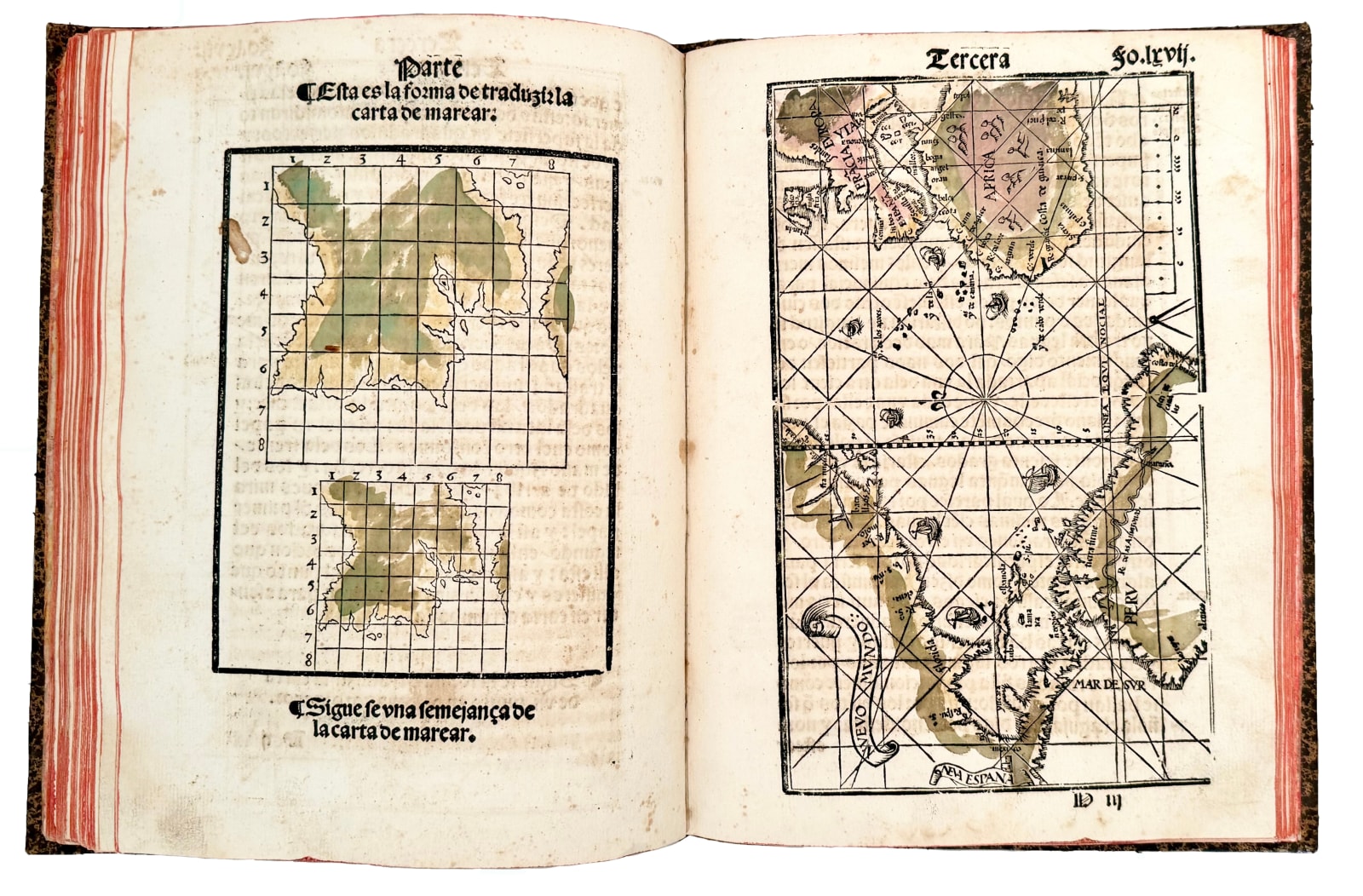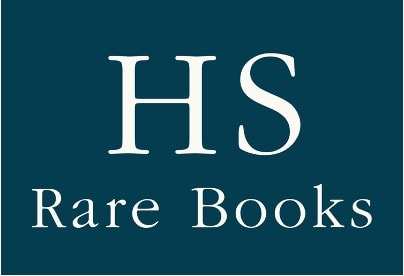







Cortes, Martin
First edition, a fabulous copy with the woodcuts and maps in contemporary color and housed in 17th or 18th century calf, in genuine condition, of the “most complete statement of navigational science to date” (PMM), a work of significant influence in the English world, an English translation by Richard Edden appeared as early as 1561, becoming one of the most relevant navigational treatises used in the Elizabethan era. The work contains information about the recently discovered regions by the Spanish and the Portuguese in America and the East.
Further images
-
(View a larger image of thumbnail 1
)

-
(View a larger image of thumbnail 2
)

-
(View a larger image of thumbnail 3
)

-
(View a larger image of thumbnail 4
)

-
(View a larger image of thumbnail 5
)

-
(View a larger image of thumbnail 6
)

-
(View a larger image of thumbnail 7
)

-
(View a larger image of thumbnail 8
)

Folio. xcv, 3 ff., plus 6 volvelles, complete, with the exception of one volvelle in an 18th or 19th century hand. Late seventeenth or early eighteenth century Spanish calf, raised bands to spine, compartments simply tooled in gilt, red morocco lettering piece, a few scratches to boards, lettering piece worn. Colored by a contemporary hand, edges tinted red, some minor scattered foxing, occasional contemporary annotations to margins, minor staining to title page, overall a beautiful example in the genuine condition.
This is one of the very few books written and published in Spain to be included in Printing and the Mind of Man, evidence of the high regard and influence it had during the Century of Discoveries; it should also be noted that neither Medina or Fernandez de Enciso’s treatises on navigation were included in PMM, maybe because of the specific nature or simply because they were less influential.
“His instructions for making charts and for plotting courses of ships on them were widely followed. Most important of all, he first understood and described the magnetic variation of the compass, suggesting that the magnetic pole and the true pole of the earth were not the same” (PMM).
Cortes’ Breve Compendio is probably the rarest of the great Spanish treatises of the early stages of the century of discoveries, it stands proudly with Medina and Fernandez de Enciso’s works on navigation to the Americas, with one peculiarity, whilst the latter two are obtainable in the market from time to time, the book here offered is exceptionally rare in good condition, copies are usually heavily incomplete or simply destroyed, as for example the Streeter copy, which lacked all volvelles, was cropped affecting text and with rust holes on title page; Streeter’s copy of the second edition in English made 120,000 $ at his sale, whilst his copy of this first edition, understandably because of the bad condition it was in and its incompleteness, made 78,000 $.
The translation of this work into English was due to no less than Richard Eden (ca 1520-1576), secretary to Sir William Cecil, who was working with the earl of Northumberland to challenge Spain's global empire. Upon its appearance, it provided Elizabethan navigators the first practical advice for the mastery of the sea, and thus its influence hard to overstate. In fact a whole chapter of Wright’s Errors in Navigation is essentially a translation from Cortes. It is probably this influence that carried weight in the decision to include this work in PMM. The text is divided into three parts: first on the cosmos, the size of the earth, and geographical climates; second on the courses of the sun and moon, the seasons, tides, and weather; and finally a practical manual on navigation and the construction of navigational instruments. This treatise also inspired William Bourne to write his Regiment of the Sea, the first printed treatise on navigation in the English language.
“Extremely rare... This work revolutionised the science of Navigation, and was the first to point out the deflection of the needle. The date at which it was written appears in some of the passages of the earlier part of the book as 1545, but a year or two probably elapsed before the author could finish it and get it ready for the press. The instructions for map-making are not the least interesting part of the text, and would be found useful by many persons who are unable to understand the principle of the wind-roses and rhumb-lines which cover the surface of old hydrographic charts. But even here the acute intelligence of Cortes indicated the defects of the plane systems long before Mercator” (Quaritch Little Catalogue of Geography, Americana, Voyages, 1895).
The map:
Entitled “Nuevo Mundo”, it first appeared in Medina's Arte de Navegar (1545), as Burden notes, the map is based on firsthand knowledge, it “depicts the trade routes to and from Spain and her possessions by the use of ships heading south-westerly on the outward bound journey and returning via the Gulf Stream to the north-east. The Papal demarcation line dividing the Americas between Portugal (the land to its east) and Spain (to its west) runs vividly through the map, illustrating for the first time the future influence that the former was to have over the country we know of as Brazil… A clearly identifiable Gulf of St. Lawrence begins to take shape following the voyages of Jacques Cartier” (Burden).
Sabin 16966; Borba de Moraes, p. 219; Palau 63378; PMM, 76.
Provenance: the collection of Joan Gilli, U.K.
Join our mailing list
* denotes required fields
We will process the personal data you have supplied in accordance with our privacy policy (available on request). You can unsubscribe or change your preferences at any time by clicking the link in our emails.
